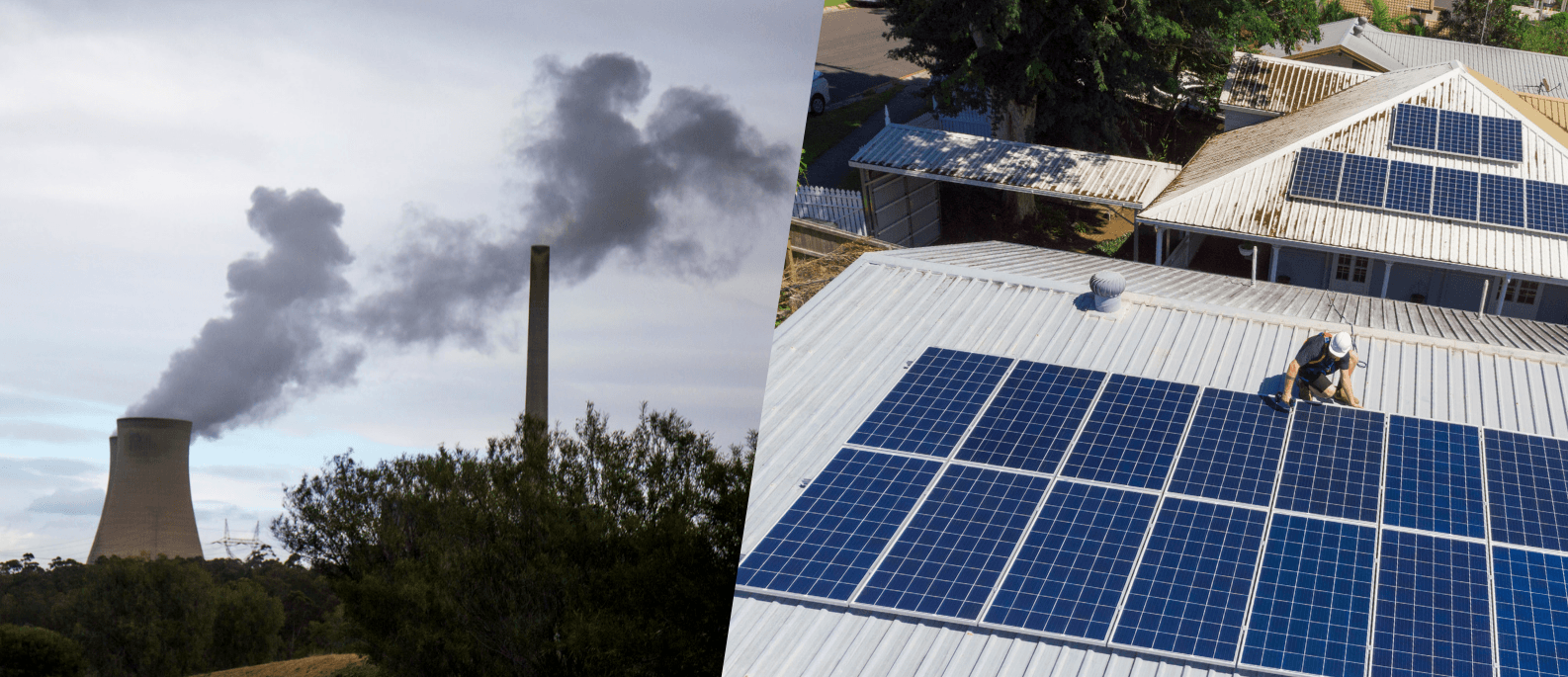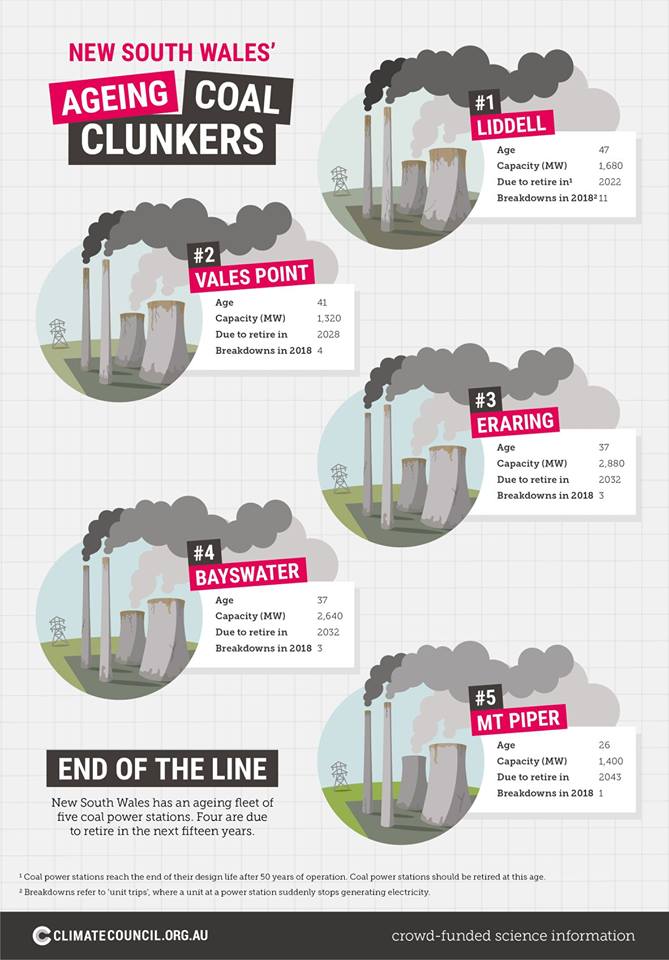New South Wales was once a world leader on climate action, but a new Climate Council report shows it is now far behind, spewing more greenhouse gas pollution into the atmosphere than any other state or territory. The Climate Council report – Ageing and Unprepared: Energy in New South Wales – examines the state’s ongoing dependence on coal and gas power stations and its tardy transition to renewable energy.

New South Wales is home to Australia’s oldest fleet of coal power stations and has limited state government policies to encourage more wind and solar projects in the state beyond 2020. There is a serious risk that New South Wales will be caught short as coal power stations close or unexpectedly fail in extreme weather events.
The New South Wales public is very supportive of renewable energy, with 83% wanting the state to generate more of its electricity with renewable energy. Local government is also backing renewable energy, with more than twenty local councils supporting new solar farms in the state to help reduce their power bills.
Download the full report here.
Report key findings:
New South Wales was once a world leader on climate action, but over the past five years it has become a laggard.
- New South Wales introduced the world’s first emissions trading scheme in 2003, which over 10 years reduced greenhouse gas pollution by an estimated 144 million tonnes. The scheme concluded in 2012.
- Over the past five years South Australia, the Australian Capital Territory and Tasmania have led the country on renewable energy progress, while New South Wales has consistently remained at the back of the pack.
- New South Wales used to have strong emissions reduction targets to reduce greenhouse gas pollution but these targets were dropped; the state planned to introduce a renewable energy target, but it was never implemented.
New South Wales is responsible for more greenhouse gas pollution than any other state or territory and continues to rely on heavily polluting coal and unreliable gas power stations.
-
New South Wales has Australia’s oldest coal fleet and is home to five operating coal power stations; collectively they produced 82% of the state’s electricity in 2017.
-
It is risky to rely on old coal power stations because they become increasingly unreliable with age.
-
New South Wales has excellent wind and solar resources; however, they account for just 6% of the electricity generated in New South Wales.
Current climate policies in New South Wales are inadequate, although local councils are stepping up in the face of state government inaction.
-
New South Wales does not have a comprehensive policy or target to encourage new renewable energy generation, nor does it have policies to enable the state to reach its net zero emissions target in 2050.
-
In the past 12 months the state has taken some positive steps to encourage renewable energy and storage technologies, further action is required.
-
There is massive potential in New South Wales for new jobs and investment in a renewable energy future.
-
Local councils like Lismore, Newcastle and Musswellbrook are all leaders on climate action.
New South Wales is highly exposed to the impacts of climate change.
-
Climate change, driven by the burning of coal, oil and gas, is already affecting New South Wales.
-
Extreme heatwaves led to a 10% increase in both deaths and ambulance callouts in New South Wales between 2005 and 2015.
-
Damages from extreme weather events cost New South Wales $3.6 billion per year and this figure is likely to rise as these events, driven by climate change, become more frequent and severe.
-
The cheapest and fastest way for New South Wales to reduce its greenhouse gas pollution would be to progressively replace the state’s coal power stations with renewable energy like wind and solar, with storage.


